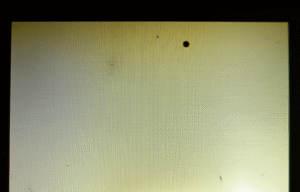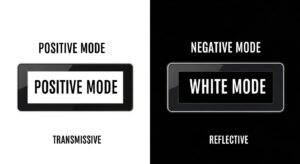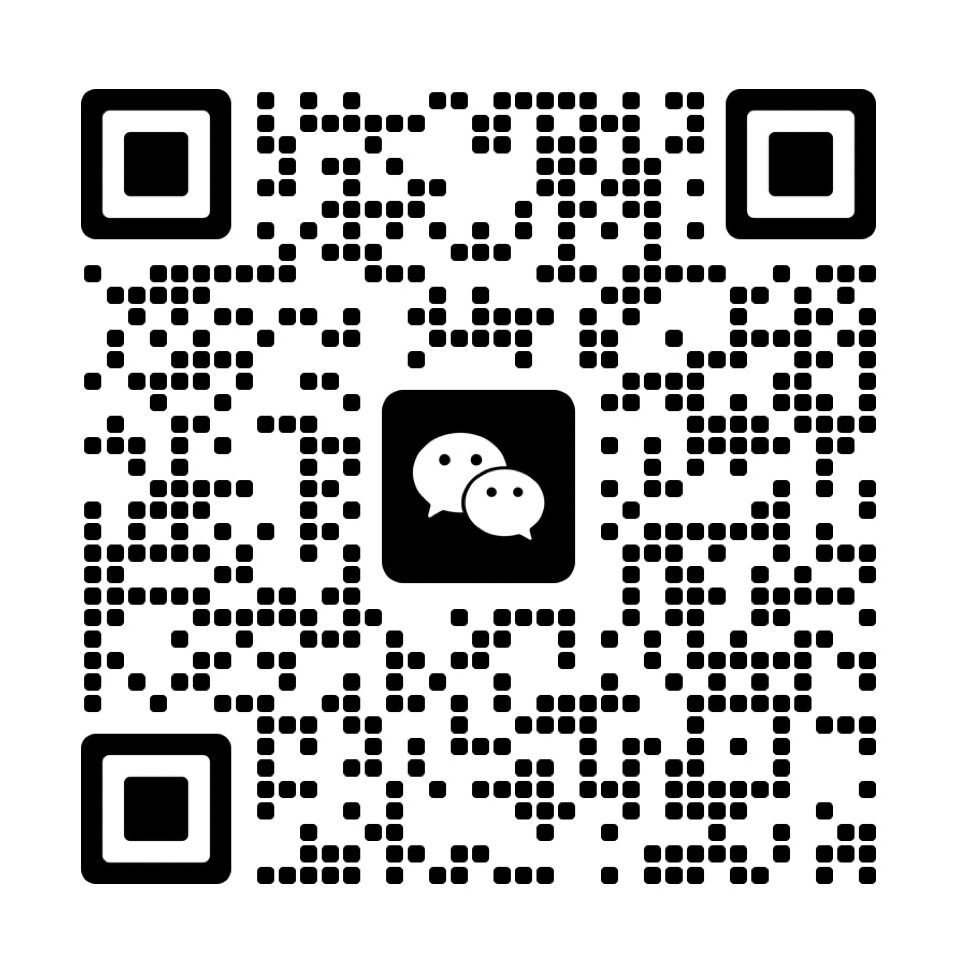Why LVDS Is the Best Choice for Flip Screen Displays
The use of LVDS in flip screen displays has many benefits. That is why many people choose it over other options. LVDS works well because it uses low voltage differential signaling. This means it needs less power and gives high-quality signals.
LVDS sends data by using the difference in voltage between two wires. This method keeps the data safe and lowers electromagnetic interference. This is crucial for screens that move and flip a lot since they need a stable signal to function properly. LVDS also uses less power, which can help keep the battery life longer and produce less heat. These features are very important for devices you can carry around.
LVDS is a great method to send data fast while using less power. It also helps reduce signal noise. This is why LVDS is key for making high-quality and dependable flip-screen displays in several areas.

Key Highlights
- LVDS stands for Low Voltage Differential Signaling. This technology is good for sending data fast. You can often find it in flip screen LCDs.
- LVDS sends data using low voltage and special signals. It uses twisted-pair copper cables. This helps to create a strong signal and lowers electromagnetic interference.
- LVDS also saves energy. This is important for devices like laptops and tablets that rely on batteries.
- This technology works well with high resolution and quick refresh rates. This helps ensure a smooth experience with flip screens.
- You will see LVDS in many places. It is popular in consumer electronics, car displays, and professional devices that use flip screens.
Introduction
In today’s online world, moving data fast and clear is very important. LVDS means Low Voltage Differential Signaling. This technology is important for devices using flip-screen LCDs. LVDS provides a great visual experience with a scalable coherent interface. It helps maintain strong signal integrity. High signal integrity leads to less loss and distortion. That is why LVDS TFT LCD screens perform better.
What Is an LVDS Interface and Why Is It Important for Flip Screen LCDs?
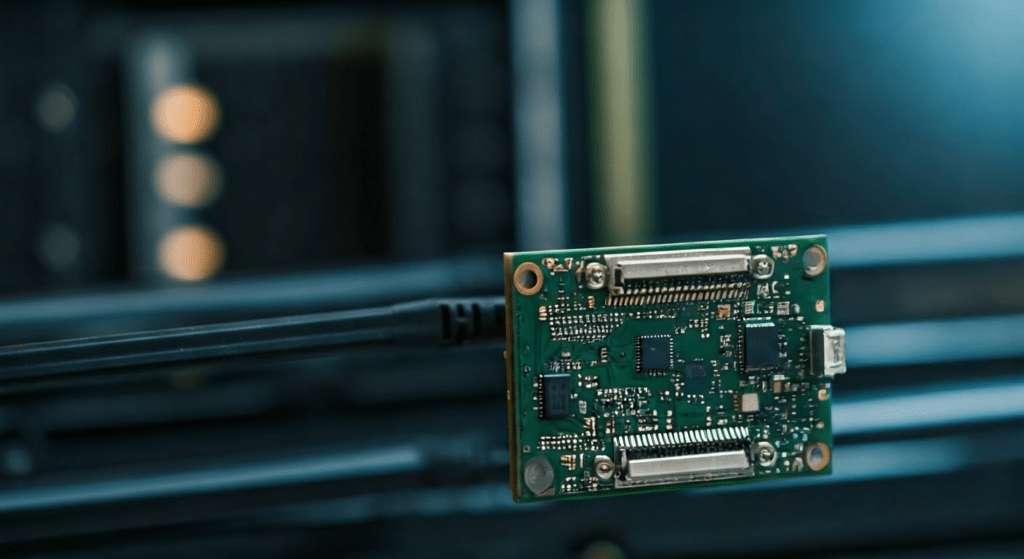
Low Voltage Differential Signaling, or LVDS, uses two wires to send data. It checks the voltage difference between these wires to share information. This method reduces electromagnetic interference, which is called EMI. Because of this, it provides a clear and strong signal. This clarity is crucial for getting high-quality images in flip screen LCDs. So, why does this matter for flip screens?
Flip screens can tilt in different ways. This can cause signal issues and more noise. LVDS, which means low voltage differential signaling, helps reduce electromagnetic interference (EMI). Thanks to LVDS, when flip screens move or turn, the signals stay clear. This ensures that everyone can see a bright, clear, and quiet display.
Key Benefits of LVDS in Flip Screen Displays
LVDS is a great option for flip screen LCDs for two main reasons. First, it gives clear, high-quality signals. Second, it uses less power. LVDS displays show sharp images while saving battery life. These advantages make LVDS displays perfect for portable devices that need good performance and long battery life.
1. Signal Quality and Stability
Signal integrity is important for clear displays, especially for flip screens that move often. LVDS, or Low-Voltage Differential Signaling, sends data by using the voltage difference between two wires. This method helps to reduce signal issues. It also protects data transmission from electromagnetic interference. As a result, the picture remains clear.
In the LVDS system, the voltage difference for data is low. It’s usually around 350mV. This low voltage keeps the information safe and reduces outside noise. As a result, LVDS keeps a steady signal. This steadiness is important for flip screen LCDs. It helps them show clear and stable images, even when there is a lot of movement.
LVDS technology is great for LCD screens that can turn. It cuts down on electromagnetic interference. This keeps the signal integrity strong. As a result, designs can be more flexible while still having high display quality.
2. Low Power Consumption
In today’s world, we use a lot of portable devices. A common concern is their power consumption. LVDS technology could help address this issue. It is effective for flip screen LCDs in laptops and tablets. The main reason it saves power is the small voltage difference in how it sends data.
Using a lower voltage difference helps the LVDS transmitter save energy(We offer customized monochrome display modules with low power consumption). This is good for battery-powered devices. They can work longer before needing to be charged. It also creates less heat. This is important for smaller devices like laptops.
How Does LVDS Work in Flip Screen LCD Displays?
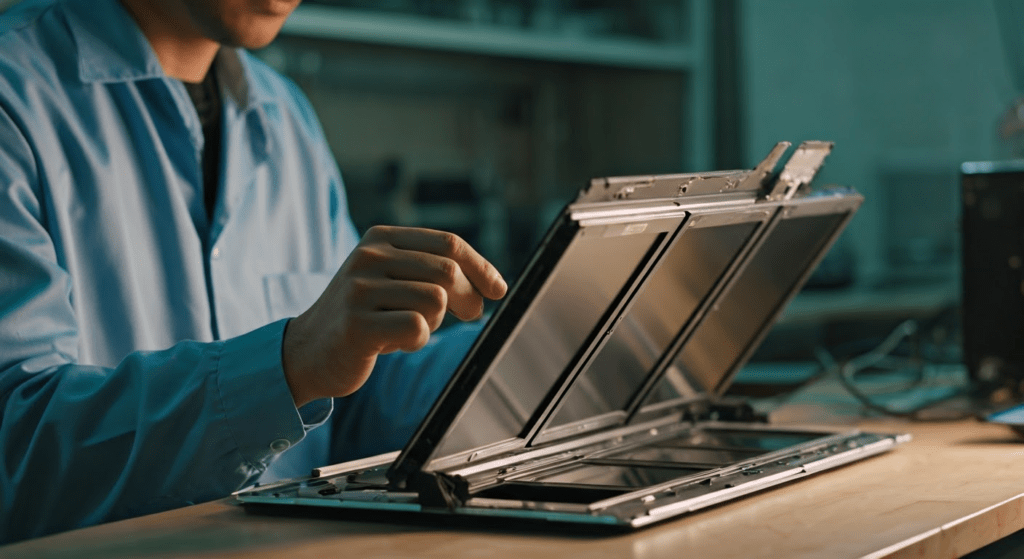
The great thing about LVDS in flip-screen LCDs is how fast it works. LVDS sends data quickly through two wires. This helps the graphics controller connect easily with the display. As a result, data moves smoothly. That’s why we can see clear images on our screens.
The Flipping Mechanism
The LVDS transmitter is located on the device’s motherboard. It sends data to the receiver in the LCD panel. A flexible cable connects them. This cable goes through the hinge, allowing the screen to move and control each pixel.
There is a driver IC in the LCD panel. This IC gets LVDS signals. Then, it changes these signals into voltages. The voltages control the liquid crystals in every pixel. This is how images show up on the screen.
Resolution Support
LVDS provides strong data transmission. It uses a method called differential signaling. This method sends data by showing differences in voltage. This is faster than older ways. LVDS can send more data quickly. It also uses twisted-pair wiring. This wiring helps reduce electromagnetic interference. Because of this, the data remains clear, even at high speeds. This keeps the signal sharp and accurate. As a result, the display can show each pixel clearly.
Practical Applications of LVDS in Flip Screen LCDs
The LVDS technology is useful for more than just laptops and tablets. It is also important in areas like consumer electronics and healthcare. These fields use LVDS in their flip screen LCDs. They value its strong performance and high reliability. Let’s look at some key areas where LVDS is making a big impact.
1. Consumer Electronics
LVDS is used in flip screen LCDs that are in many devices. You can find LVDS in laptops, tablets, and high-end smartphones. It helps to make images clearer and saves energy. This is great for portable devices as it allows the battery to last longer. You won’t lose screen brightness or feel slow responses.
2. Automotive Displays
The car industry is working hard to make display systems better. LVDS is important in this development. Many new cars have flip-screen LCDs on their dashboards. These screens help with entertainment, navigation, and rearview camera images. LVDS technology is strong and dependable. That is why it is a great option for vehicles.
When a car moves, bumps in the road can weaken signals for technology. This can cause problems. However, LVDS provides strong signal integrity. Because of this, displays stay clear and steady, even on bumpy roads. We also see new display technologies, like IPS panels and projected capacitive touch screens, in many cars today.
These advanced screens need LVDS. LVDS helps them send data fast. It is great for music systems. It also provides real-time updates for navigation. This is important for a smooth and connected driving experience.
3. Professional Equipment
Medical devices need clear screens for accurate checking and observation. Portable ultrasound machines often have flip screens that use LVDS. This technology presents clear pictures of internal organs. The sharpness of these images helps doctors make better decisions.
Industrial control panels must have strong display choices since they operate in hard conditions(Hwa Hsien Ching offers customized LCD modules for extreme operating conditions). LVDS TFT displays offer the toughness and protection against electromagnetic interference that these environments need. The LVDS scalable coherent interface allows these displays to connect easily with various industrial machines.
LVDS technology is useful for many tools that professionals work with. It’s important for medical imaging and complex control systems. You can find reliable and high-quality flip screen LCDs using this technology. It helps improve efficiency and accuracy in various fields.
LVDS Wiring and Connection Tips
You should know the basic wiring and connections. These details can help you avoid problems. If you remember this, your LVDS system will work well for a long time.
Good data transfer starts with the right wiring. LVDS sends data by using the voltage difference between two wires. It’s very important to get the wire polarity right. To ensure this, check the color codes or marks on the LVDS cables and connectors.
Having a secure connection is very important. Loose LVDS cables can cause noise. This noise can reduce the quality of your display. So, be careful when you connect or unplug LVDS cables. Use gentle pressure to make sure everything fits properly.
1. Understand the Pinout
Before you use an LVDS system, check the pinout diagram. You can usually find this diagram in the technical papers for the device. This diagram will show you what each pin does in the LVDS connector.
If you wire the pins wrong, it can create issues or harm the LVDS transmitter, receiver, or display. One pin gives the clock signal, which is key for smooth data transmission. If you choose the wrong pin for this connection, it may lead to mixed-up data. This mistake can make the screen look scrambled or even leave it blank.
Understanding termination is important when using LVDS. Termination resistors should be placed at the end of the transmission line. They help keep the signal integrity by reducing reflections. You can look at the pinout diagram to learn how to set up termination and where to place the resistors.
Always check the pinout diagram for the LVDS connections. If you have questions, feel free to ask a skilled technician for help.
2. Choose the Right Cable
A good cable will help your LVDS connection work better. It sends data quickly and helps maintain signal integrity. The quality of the cable really affects how well the signals come through.
When you choose a cable, consider its length and impedance. A long cable might reduce the signal strength. If you have to use a long cable, look for one that has good shielding. Impedance shows how much the cable resists the flow of alternating current. This is measured in ohms. For LVDS, the correct impedance is 100 ohms.
If a cable has the wrong impedance, signals can bounce back. This bounce can harm the signal quality. The design of the cable matters too. Cables that use twisted pair wiring work well. They reduce electromagnetic interference. It’s smart to invest a little more in a good LVDS cable. A quality LVDS cable will give you a strong and steady connection for your display over time.
Comparing LVDS with Other Interfaces for Flip Screens
LVDS is often used for flip screen displays. There are other types available as well. Each type has its own benefits and downsides. Understanding these differences helps us see how data transmission affects how well a display works.
HDMI stands for High-Definition Multimedia Interface. A lot of people use it for their TVs and monitors. HDMI is great because it delivers clear sound and picture. It can also handle a lot of information. However, it may not be the right option for devices that have flip screens. HDMI uses more power than LVDS, so it might not be suitable for devices that run on batteries.
VGA means Video Graphics Array. It is a standard for sending analog signals. You often see VGA ports on older computers. Now, they are not common on flip-screen devices. This is due to VGA’s limits on resolution. The signal quality can also drop over long distances. When choosing between LVDS, HDMI, or VGA, consider your data transmission needs. Think about the power you want to use and how you will operate your flip screen.
| Feature | LVDS | HDMI | DVI |
|---|---|---|---|
| Power Consumption | Low (1-2 W) | High (5-10 W) | High (5-8 W) |
| Cable Length | Limited (up to 2 m) | Long (up to 15 m) | Medium (up to 10 m) |
| Pin Count | Compact (20-40 pins) | Large (19-29 pins) | Large (24 pins) |
| Application | Mobile, Industrial | Home Entertainment | Professional Use |
For compact flip screen LCDs, LVDS is the clear winner, offering a balance of performance and efficiency.
Conclusion
LVDS technology is key for flip screen LCD displays. It ensures signals stay clear while using less energy. You can find LVDS in many devices like TVs, car screens, and other professional tools. This shows that it is trusted and flexible. Learning about LVDS wiring can help you understand why it’s a better choice than other connection types. LVDS improves performance and supports many features. So, think about using LVDS to make your flip screen experience better.
Frequently Asked Questions
LVDS technology is key for flip screen LCD displays. It ensures signals stay clear while using less energy. You can find LVDS in many devices like TVs, car screens, and other professional tools. This shows that it is trusted and flexible. Learning about LVDS wiring can help you understand why it’s a better choice than other connection types. LVDS improves performance and supports many features. So, think about using LVDS to make your flip screen experience better.
How does LVDS improve flip screen performance?
LVDS helps flip screens perform better. It uses one transmitter to send data efficiently. This process sends the voltage difference between two wires. It keeps the signal strong and reduces electromagnetic interference. Because of this, LVDS increases data rates and enhances signal quality, even when the screen shakes a lot.
Can LVDS support touchscreen flip screens?
Yes, LVDS is great for touchscreen flip screens. A touch controller usually comes with the LVDS TFT display. This controller manages the touch features. It mainly uses a capacitive touch panel and works separately from the LVDS signal. However, the driver IC that controls the display can use the same voltage source as the touch controller.
Is LVDS better than HDMI for flip screens?
For small devices like laptops and cameras, LVDS uses less power. It is also more flexible than HDMI. However, if you are connecting to external screens like TVs, HDMI is a better option.



